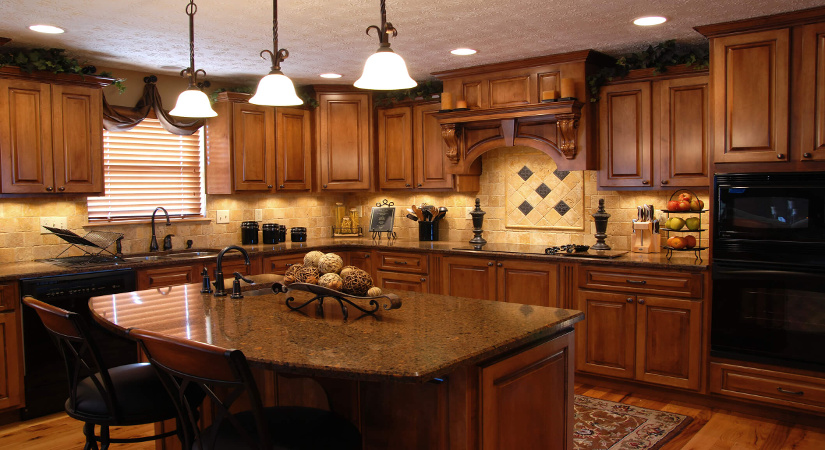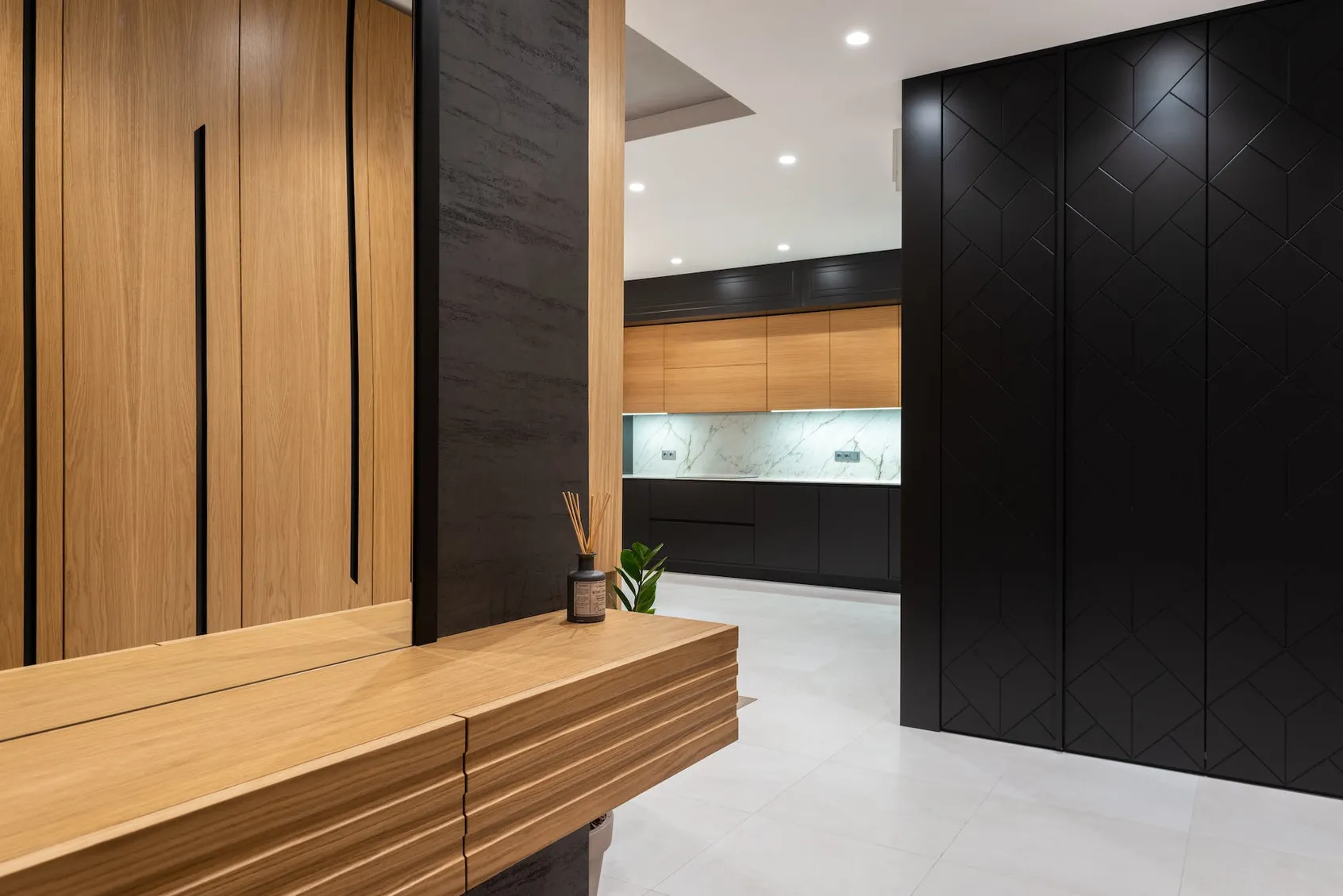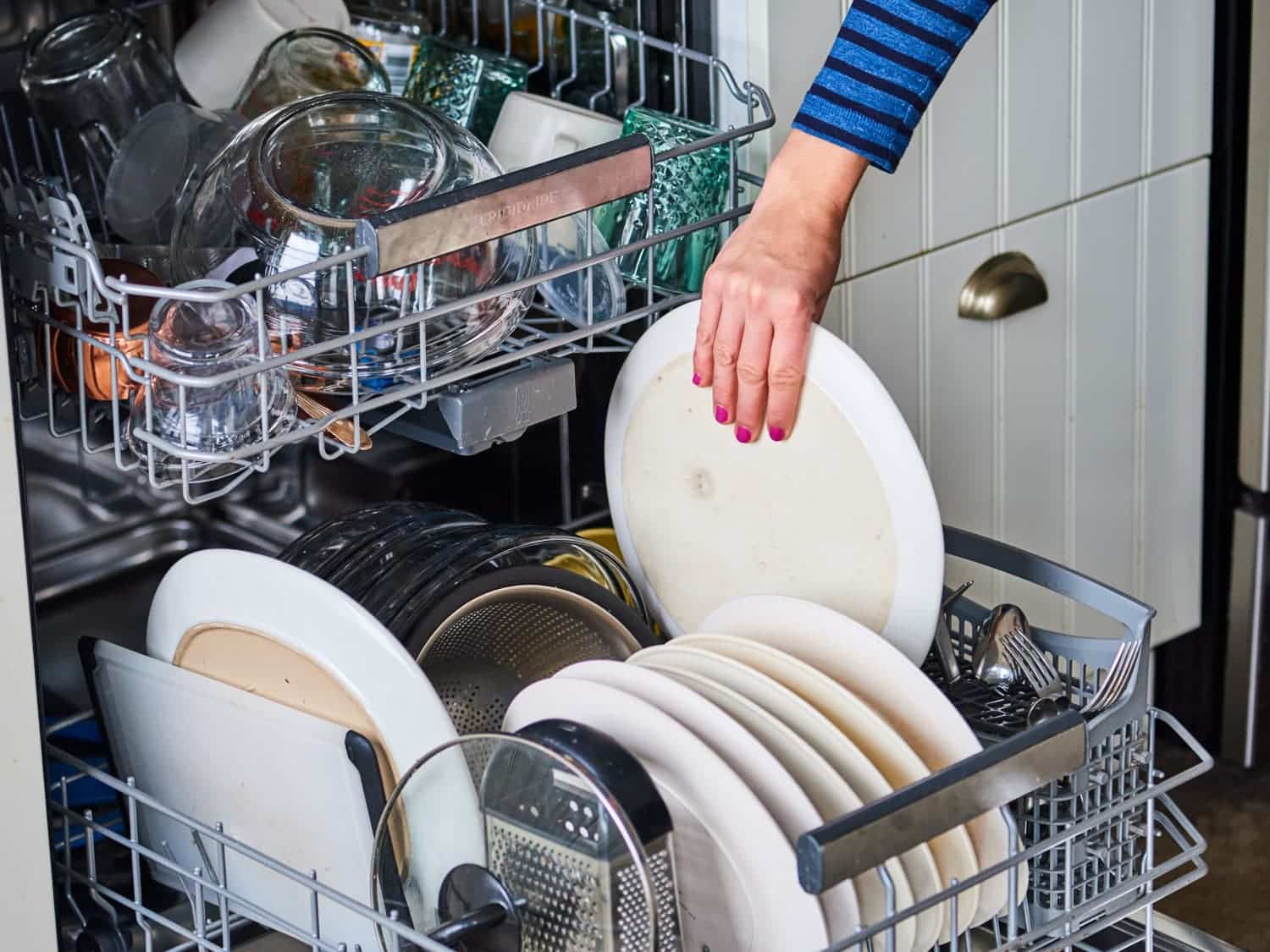Mounting kitchen cabinets to the wall is an essential step in any kitchen renovation or remodel. It not only adds functionality and storage space to your kitchen but also enhances its overall appearance. If you are planning to mount kitchen cabinets to your wall, follow this step-by-step guide to ensure a secure and professional-looking installation.1. How to Mount Kitchen Cabinets to the Wall
Step 1: Start by measuring and marking the height at which you want your cabinets to be mounted. This will depend on the size of your cabinets and your personal preference. Step 2: Use a stud finder to locate the studs in your wall. This is crucial for ensuring a strong and secure mount. Mark the location of the studs with a pencil. Step 3: Using a level, draw a horizontal line on the wall where the bottom of your cabinets will sit. This will serve as a guide for mounting the cabinets evenly. Step 4: Next, drill pilot holes into the back of the cabinets. This will make it easier to screw them into the wall later on. Step 5: With the help of a friend or family member, hold the cabinets in place on the wall, making sure they are level and aligned with the marked stud locations. Step 6: Use long screws to secure the cabinets to the wall through the pilot holes. Make sure to screw them into the studs for added support. Step 7: Repeat the process for each cabinet, making sure they are evenly spaced and aligned with the horizontal line. Step 8: Once all the cabinets are mounted, use wood shims to fill any gaps between the cabinets and the wall. This will ensure a snug fit and prevent any movement. Step 9: Finally, install the cabinet doors and hardware to complete the look.2. Step-by-Step Guide for Mounting Kitchen Cabinets
To successfully mount kitchen cabinets to your wall, you will need the following tools and materials: - Measuring tape - Stud finder - Pencil - Level - Drill - Long screws - Wood shims - Cabinet doors and hardware3. Tools and Materials Needed for Mounting Kitchen Cabinets
Mounting kitchen cabinets may seem like a daunting task, but with the right tools and techniques, it can be a smooth and successful process. Here are some tips to keep in mind: - Always mount kitchen cabinets onto studs for added support and stability. - Use a level to ensure the cabinets are straight and evenly aligned. - Have a friend or family member assist you in holding the cabinets in place while you secure them to the wall. - Use shims to fill any gaps between the cabinets and the wall for a snug fit.4. Tips for a Secure and Level Mounting of Kitchen Cabinets
When mounting kitchen cabinets, there are a few common mistakes that people often make. Avoid these to ensure a successful installation: - Not using a stud finder to locate and mark the studs. This can lead to an unsecure and uneven mount. - Not using a level to ensure the cabinets are straight and aligned. - Forgetting to drill pilot holes before screwing the cabinets into the wall. This can cause the wood to split and make it difficult to secure the cabinets.5. Common Mistakes to Avoid When Mounting Kitchen Cabinets
There are a few different methods for mounting kitchen cabinets to the wall, each with its own pros and cons: - Directly screwing the cabinets into the wall studs - Using a French cleat system - Using a metal rail system - Using a Z-clip system Do some research and choose the method that works best for your specific cabinets and wall type.6. Different Methods for Mounting Kitchen Cabinets to the Wall
Each mounting technique has its own advantages and disadvantages. Here are some to consider: - Directly screwing into studs is the most secure and cost-effective method but requires precise measurements and may not be suitable for all cabinet types. - French cleat systems allow for easy removal and repositioning of cabinets but may not support heavy cabinets. - Metal rail systems provide a sleek and modern look but can be more expensive. - Z-clip systems are versatile and easy to install but may not be as secure as other methods.7. Pros and Cons of Different Mounting Techniques for Kitchen Cabinets
Studs are the vertical wooden beams within your wall that provide support for mounting heavy objects. Here's how to locate and mark them: - Use a stud finder to scan the wall and locate the studs. - Mark the location of the studs with a pencil. - Double-check the location of the studs by measuring 16 inches from the marked stud and seeing if you find another one. This is the standard distance between studs. - Use a level to draw a vertical line on the wall, connecting all the marked stud locations.8. How to Find and Mark Studs for Mounting Kitchen Cabinets
Before mounting the cabinets, it's important to prepare the wall to ensure a secure and professional-looking installation: - Fill any holes or dents in the wall with spackling paste and sand them down for a smooth surface. - If the wall is uneven, use a sander to even it out. - Prime the wall with a stain-blocking primer to prevent any stains from seeping through and ruining your cabinets.9. Preparing the Wall for Mounting Kitchen Cabinets
Despite your best efforts, you may encounter some issues when mounting kitchen cabinets. Here are some common problems and how to fix them: - Cabinets are not level: Use shims to fill any gaps between the cabinets and the wall to even them out. - Cabinets are not aligned: Loosen the screws and readjust the cabinet until it is aligned with the other cabinets. - Cabinet doors are not closing properly: Adjust the hinges until the doors are aligned and closing smoothly. Mounting kitchen cabinets to the wall may require some time and effort, but the end result is well worth it. By following these tips and techniques, you can achieve a secure and professional-looking installation that will enhance the functionality and aesthetics of your kitchen.10. Troubleshooting Common Issues When Mounting Kitchen Cabinets
Mounting Kitchen Cabinets to the Wall: A Crucial Step in House Design

The Importance of Properly Mounting Kitchen Cabinets
 When it comes to designing a kitchen, the placement and installation of cabinets play a crucial role. Not only do cabinets provide essential storage space, but they also contribute to the overall aesthetic of the kitchen.
Mounting kitchen cabinets to the wall is a critical step in house design that ensures both functionality and style.
Properly mounting kitchen cabinets to the wall creates a sturdy and secure foundation for the cabinets. This is especially important as kitchen cabinets tend to hold heavy items such as dishes, pots, and small appliances.
By ensuring the cabinets are correctly mounted, homeowners can avoid accidents and damage to their belongings.
In addition, well-mounted cabinets can also contribute to the longevity of the cabinets themselves, as they are less likely to experience wear and tear due to improper installation.
When it comes to designing a kitchen, the placement and installation of cabinets play a crucial role. Not only do cabinets provide essential storage space, but they also contribute to the overall aesthetic of the kitchen.
Mounting kitchen cabinets to the wall is a critical step in house design that ensures both functionality and style.
Properly mounting kitchen cabinets to the wall creates a sturdy and secure foundation for the cabinets. This is especially important as kitchen cabinets tend to hold heavy items such as dishes, pots, and small appliances.
By ensuring the cabinets are correctly mounted, homeowners can avoid accidents and damage to their belongings.
In addition, well-mounted cabinets can also contribute to the longevity of the cabinets themselves, as they are less likely to experience wear and tear due to improper installation.
Step-by-Step Guide to Mounting Kitchen Cabinets
 While the idea of mounting kitchen cabinets may seem daunting, with the right tools and knowledge, it can be a manageable task for any homeowner. The first step is to gather all the necessary tools, including a drill, screws, a level, and a stud finder. Once the tools are gathered, it's essential to
measure and mark the placement of the cabinets on the wall
to ensure they are properly aligned and centered.
Next, use a stud finder to locate the wall studs, as they provide the necessary support for hanging the cabinets.
Drilling into the studs is crucial for the stability and strength of the cabinets.
Once the studs are located, use the level to ensure the cabinets are straight before securing them to the wall with screws.
While the idea of mounting kitchen cabinets may seem daunting, with the right tools and knowledge, it can be a manageable task for any homeowner. The first step is to gather all the necessary tools, including a drill, screws, a level, and a stud finder. Once the tools are gathered, it's essential to
measure and mark the placement of the cabinets on the wall
to ensure they are properly aligned and centered.
Next, use a stud finder to locate the wall studs, as they provide the necessary support for hanging the cabinets.
Drilling into the studs is crucial for the stability and strength of the cabinets.
Once the studs are located, use the level to ensure the cabinets are straight before securing them to the wall with screws.
Consult with a Professional
 While mounting kitchen cabinets to the wall may seem like a DIY project, it's always best to consult with a professional if you are unsure of the process. A professional contractor can ensure that the cabinets are correctly installed, taking into account any potential obstacles such as electrical wiring or plumbing. They can also provide valuable advice on the placement and design of the cabinets to make the most out of the available space.
In conclusion,
mounting kitchen cabinets to the wall is an essential step in house design
that should not be overlooked. It not only ensures the safety and longevity of the cabinets but also adds to the overall functionality and aesthetic of the kitchen. By following the proper steps and seeking professional help when needed, homeowners can achieve a well-designed and functional kitchen that will last for years to come.
While mounting kitchen cabinets to the wall may seem like a DIY project, it's always best to consult with a professional if you are unsure of the process. A professional contractor can ensure that the cabinets are correctly installed, taking into account any potential obstacles such as electrical wiring or plumbing. They can also provide valuable advice on the placement and design of the cabinets to make the most out of the available space.
In conclusion,
mounting kitchen cabinets to the wall is an essential step in house design
that should not be overlooked. It not only ensures the safety and longevity of the cabinets but also adds to the overall functionality and aesthetic of the kitchen. By following the proper steps and seeking professional help when needed, homeowners can achieve a well-designed and functional kitchen that will last for years to come.





























/ways-to-clean-wood-kitchen-cabinets-3017289-01-765f893e7cca49a1ab72d7c49efdf518.jpg)










































































